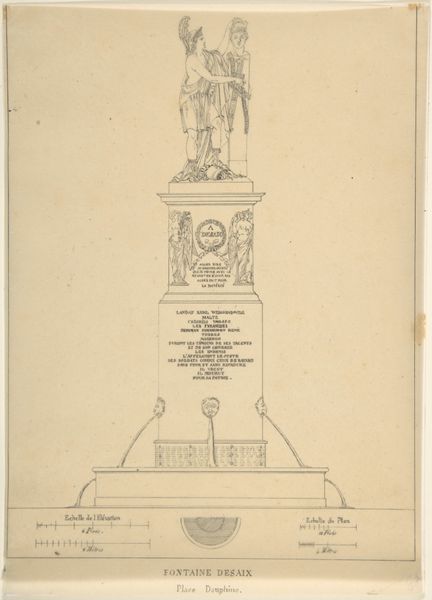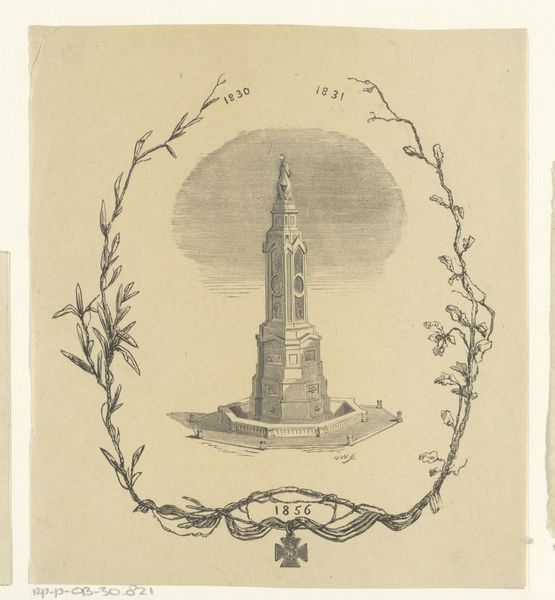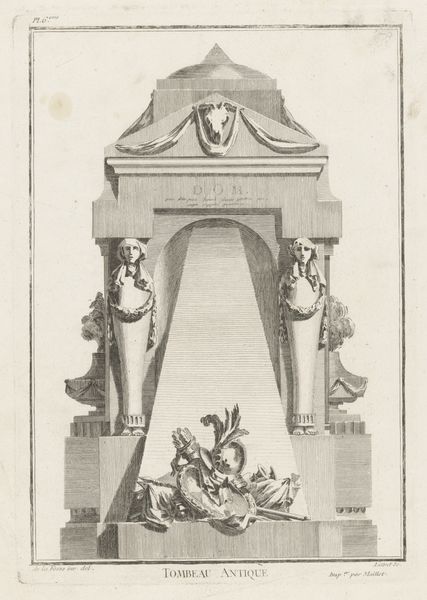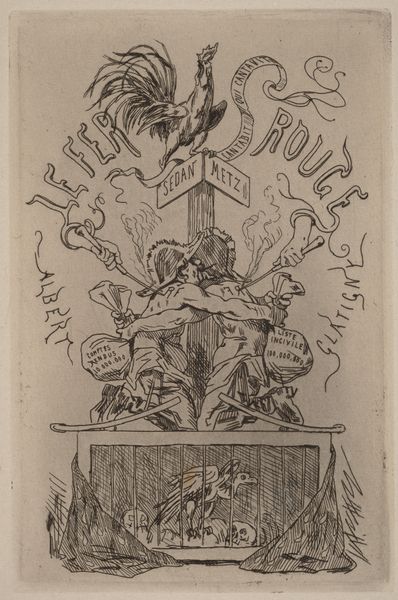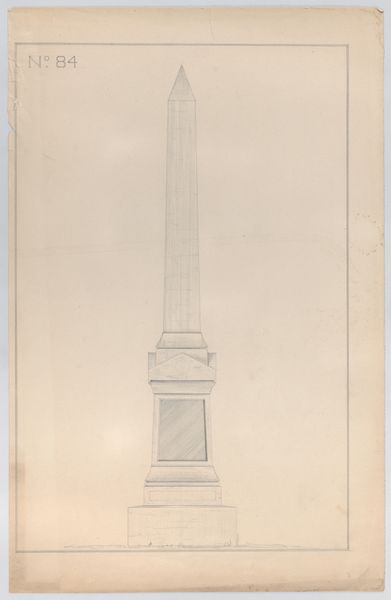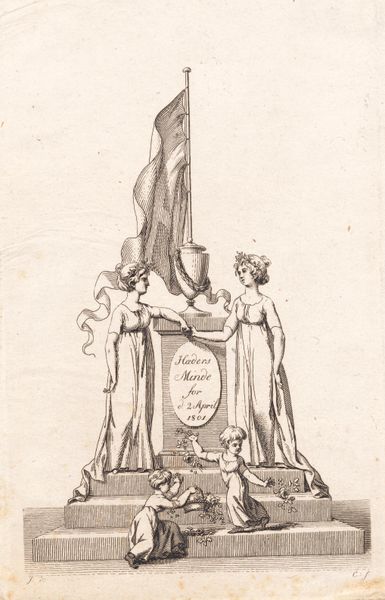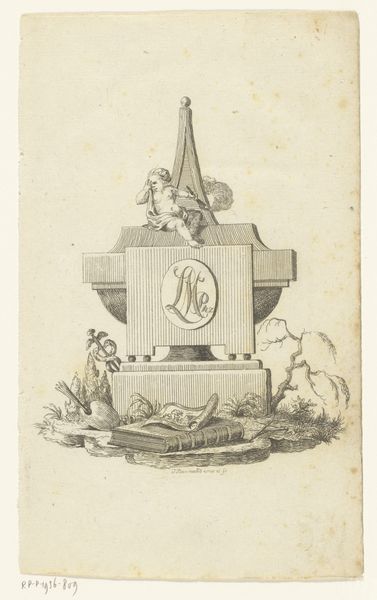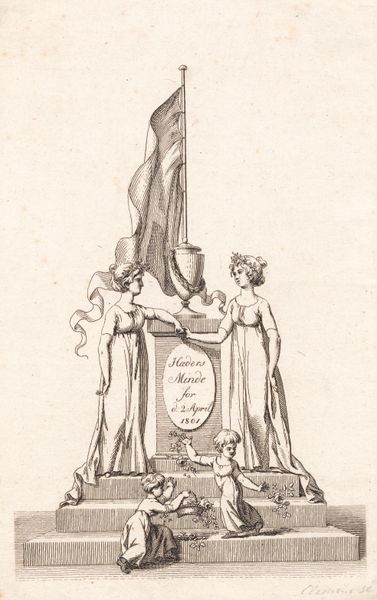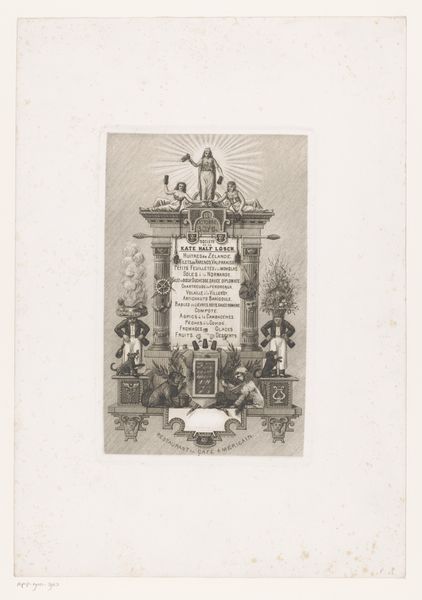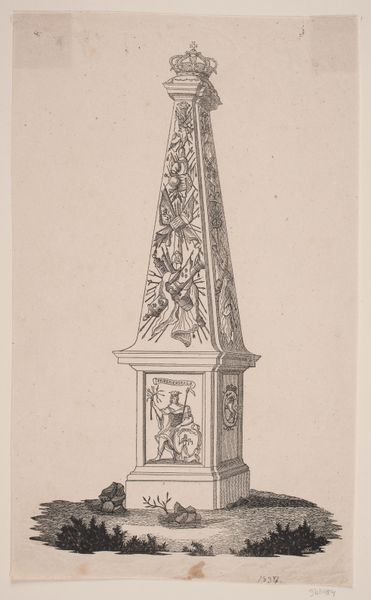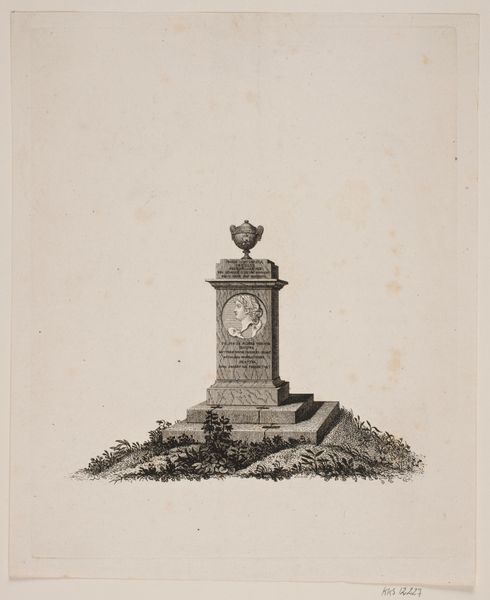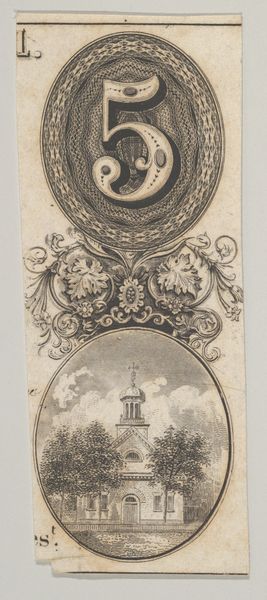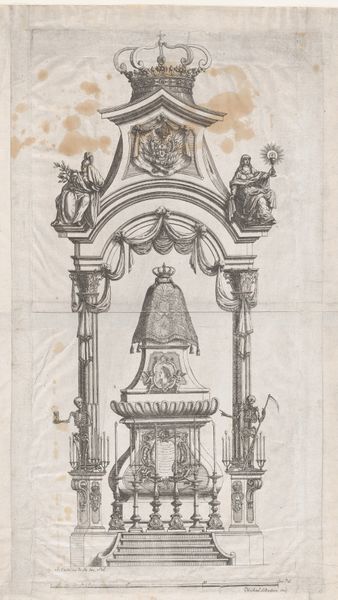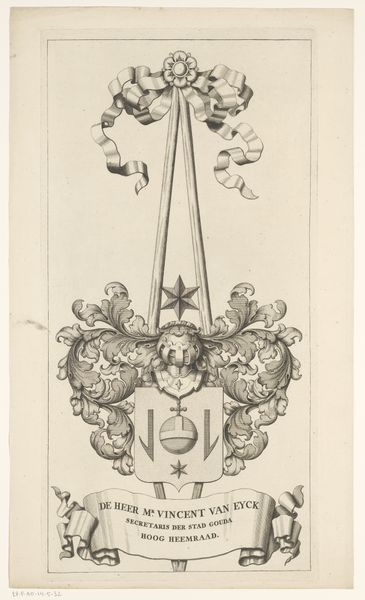
drawing, print, ink, engraving
#
drawing
#
narrative-art
# print
#
landscape
#
ink
#
line
#
cityscape
#
history-painting
#
engraving
Dimensions: 152 mm (height) x 91 mm (width) (bladmaal)
Curator: This print, titled "Grundlovsfesten ved Eremitagen den 5. juni 1854", by Balzer Dahl, offers us a glimpse into a pivotal moment in Danish history, rendered with ink and engraving techniques sometime between 1825 and 1893. What strikes you most about it? Editor: Immediately, I'm drawn to the medium, it feels quite deliberate; an engraving. It's so precise, yet almost dreamlike, maybe due to the fine lines. The sheer density of the crowd, the weight of the column itself. It all feels so symbolic, wouldn’t you agree? Curator: Absolutely, the column surmounted by the Danish flag speaks volumes. We can interpret it as a monument to the newly established constitution of 1849 and a symbolic representation of national identity and sovereignty. Notice how the column is surrounded by people? The masses who, for the first time, have a say in the governance of their country. How might their labor be seen in contrast to those enjoying the celebration? Editor: An interesting question that also brings us back to the choice of medium! This precise, repeatable engraving suggests a conscious decision to democratize access to this image of civic pride. I also noticed the intricate border with what appear to be anchors, flags, tools - each element seems significant to Danish craft, and industrial pride - especially for those that contributed. The contrast between the celebration and the labor required to enable it is quite palpable! Curator: Indeed, consider how access to citizenship and rights intertwines with themes of class and gender. Whose voices are amplified in the official narrative? How do marginalized communities participate in shaping these celebrations, or are they rendered invisible? The print’s historical value goes hand in hand with a responsibility for us to unpack how it portrays societal dynamics. Editor: It pushes us to ask how these symbols were materially produced. What workshops created these images, and by whom? Whose stories were intentionally, or unintentionally, left out. In short: who consumed it? I agree, it’s more than just a charming landscape; it holds layers of socio-political complexities, ready to be explored. Curator: Agreed. Reflecting on Balzer Dahl’s engraving urges us to view national celebrations critically through both historical and material lenses. The weight of both national pride, but also labor. Editor: Yes, to consider not only what is represented but how and for whom it was made, offering a more layered experience.
Comments
No comments
Be the first to comment and join the conversation on the ultimate creative platform.
